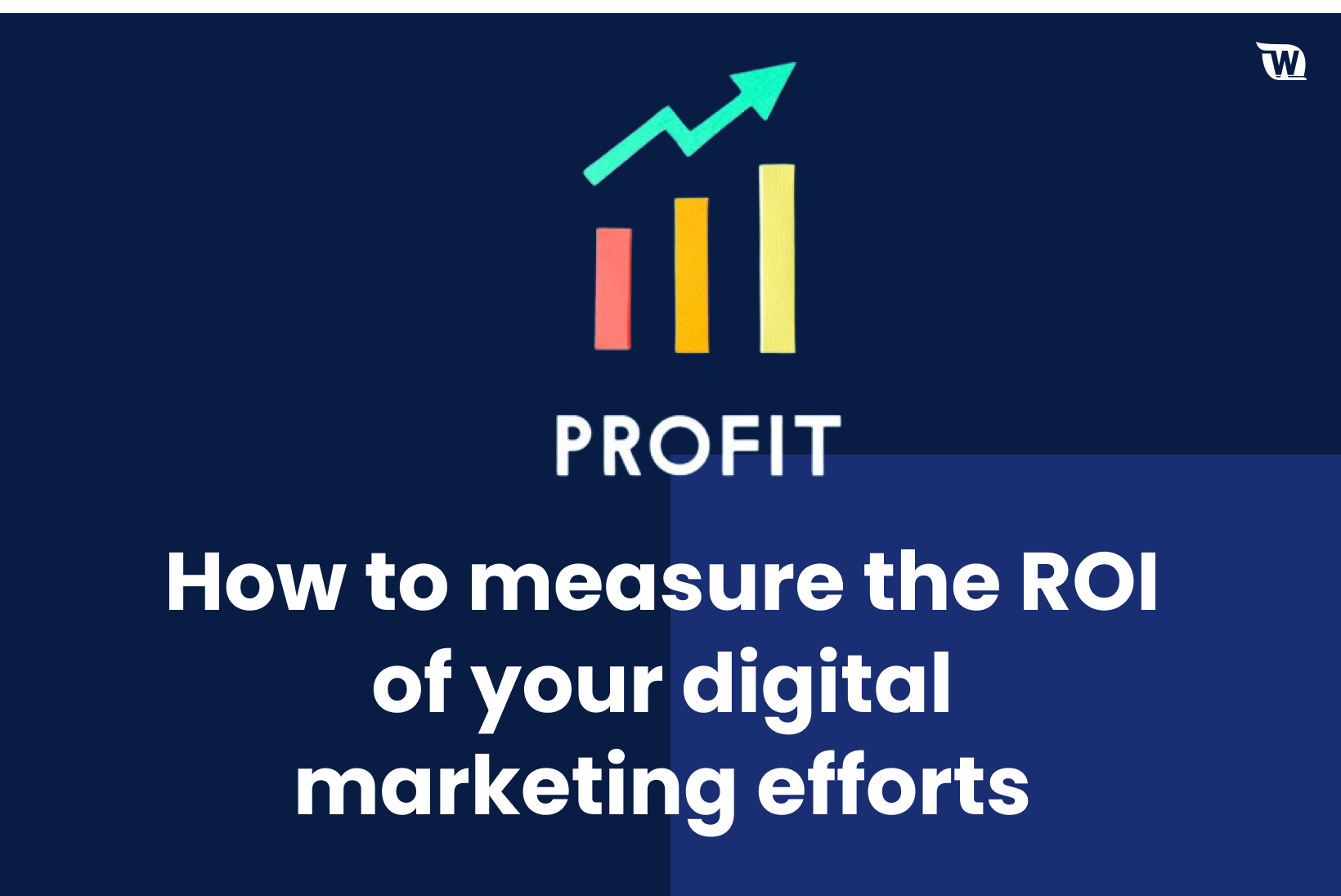How to measure the ROI of your digital marketing efforts
ROI of your digital marketing
Measuring the return on investment (ROI) of digital marketing efforts is crucial for businesses to understand the effectiveness of their marketing strategies and make informed decisions about future investments. However, measuring ROI can be challenging, especially in the digital world where conversions can happen in various ways and the customer journey is often complex. In this essay, we will explore the ways to measure the ROI of digital marketing efforts and provide insights into how businesses can optimize their marketing strategies for maximum ROI.
Firstly, it is important to understand the concept of ROI and how it is calculated. ROI is the ratio of the net benefit of an investment to its cost, expressed as a percentage. In the context of digital marketing, the net benefit can be measured in various ways, such as increased sales, leads, website traffic, or brand awareness. The cost of the investment includes the money spent on digital marketing channels, such as search engine optimization (SEO), pay-per-click (PPC) advertising, social media advertising, content marketing, and email marketing.
To measure the ROI of digital marketing efforts, businesses need to track and analyze data from various sources, such as website analytics tools, social media analytics tools, and customer relationship management (CRM) software. The data should include metrics such as website traffic, engagement metrics (e.g., likes, shares, comments), conversion rates, and sales.
One way to measure the ROI of digital marketing efforts is to use a simple formula: ROI = (Net Benefit / Cost) x 100. For example, if a business spent $1000 on PPC advertising and generated 500 leads, resulting in 50 sales, the net benefit would be $5000 (50 sales x $100 per sale). The ROI would be 500% ($5000 / $1000 x 100).
However, this formula only provides a basic idea of the ROI and does not take into account other factors that can affect the outcome. To get a more accurate picture of the ROI, businesses should consider the following factors:
- Customer lifetime value (CLV): The CLV represents the total value a customer is expected to bring to a business over their lifetime. By understanding the CLV, businesses can determine the true value of their digital marketing efforts and make informed decisions about how much to invest in them.
- Cost per acquisition (CPA): The CPA represents the cost of acquiring one customer or lead. By dividing the total marketing spend by the number of customers or leads generated, businesses can determine the CPA and compare it to the CLV to determine the profitability of their digital marketing efforts.
- Return on ad spend (ROAS): The ROAS represents the revenue generated by an advertising campaign divided by the cost of the campaign. By comparing the ROAS to the CPA, businesses can determine the effectiveness of their advertising campaigns and make adjustments to improve their ROI.
- Funnel analysis: A funnel analysis represents the different stages a customer goes through to complete a desired action, such as making a purchase or filling out a lead form. By analyzing the funnel, businesses can identify areas where customers are dropping off and make adjustments to improve the conversion rates, which can improve the ROI.
- Multi-touch attribution: Multi-touch attribution is the process of assigning credit to different touchpoints along the customer journey. By understanding which touchpoints are most effective, businesses can optimize their marketing strategies and allocate their budget accordingly, which can improve the ROI.
In addition to these factors, businesses should also consider the following best practices to measure the ROI of their digital marketing efforts:
- Set clear goals and objectives: By setting clear goals and objectives, businesses can measure their progress and determine whether their digital marketing efforts are effective.
- Use tracking and analytics tools: Tracking and analytics tools can help businesses measure the effectiveness of their digital marketing efforts and identify areas for improvement.
- Use a data-driven approach: A data-driven approach involves using data to make informed decisions about digital marketing strategies. By analyzing data, businesses can determine which strategies are effective and which are not.
- Test and optimize: Testing and optimizing digital marketing strategies can help businesses improve their ROI by identifying which elements of their strategies are most effective and which can be improved.
- Use a cross-channel approach: A cross-channel approach involves using multiple digital marketing channels to reach customers. By using a cross-channel approach, businesses can reach customers at different stages of the customer journey and improve their ROI.
To summarize, measuring the ROI of digital marketing efforts is crucial for businesses to understand the effectiveness of their marketing strategies and make informed decisions about future investments. By considering the factors mentioned above and using best practices, businesses can optimize their digital marketing strategies for maximum ROI.
However, it’s important to note that measuring ROI is not always straightforward, and there are some challenges that businesses may face. For example, some digital marketing channels, such as social media, may not provide direct conversions, making it difficult to measure the ROI. Additionally, the customer journey may be complex, involving multiple touchpoints, which can make it difficult to assign credit to each touchpoint.
To overcome these challenges, businesses can use proxy metrics, such as engagement metrics, to measure the effectiveness of their digital marketing efforts. They can also use attribution modeling to assign credit to each touchpoint along the customer journey.
Measuring the ROI of digital marketing efforts is crucial for businesses to understand the effectiveness of their marketing strategies and make informed decisions about future investments. By considering the factors mentioned above and using best practices, businesses can optimize their digital marketing strategies for maximum ROI.













